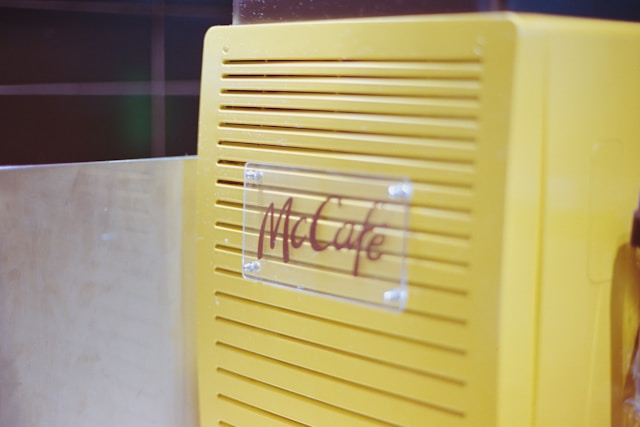Escalator, zipper, trampoline –these are products that have lost their trademarks.
Unlike them, you can help secure your brand’s individuality by registering for a trademark.
Hold up: I’m guessing the business owner inside of you is thinking: “How much does it cost to trademark a name?”
Well. . . It’s complicated. The baseline cost for a trademark is $350 per class offered, but essentially, it’s the price of securing your brand.
Our advice? Don’t wait. In 2024, the number of trademark applications worldwide stood at about 15.2 million, and in the first half of 2025, there were already more than 400,000 applications for trademarks in the US alone.
The sooner you trademark your name, the better it is.
In this article, we’ll dive into:
- What is a trademark?
- Types of Trademarks
- What do trademark symbols look like?
- Why should I register a trademark?
- How much does it cost to trademark a name?
- How do you trademark your name?
What is a trademark?
So, let’s get technical for a minute. According to the United States Patent and Trademark Office (USPTO), a trademark is “any word, phrase, symbol, design, or a combination of these things that identifies your goods or services”.
Here are some trademarks you may recognize that go even beyond the name:
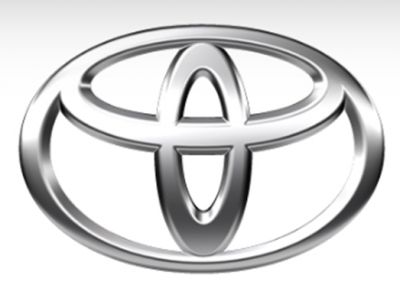
Toyota
Most likely, you see this logo a thousand times a day thanks to Toyota’s trademarking.


McDonalds
Besides the trademarked golden arches, McDonalds is also known for their trademarked phrase, “i’m lovin’ it”.l
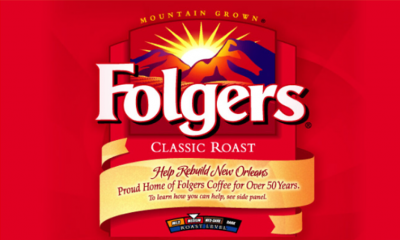
Folgers
The trademarked slogan “The best part of wakin’ up is Folgers in your cup®” probably has you singing.
The above examples feature trademarked logos, fonts, and phrases. A trademark helps keep your company unique.
Types of Trademarks
Before we get into how much trademarks cost, let’s glance at the different types of trademarks. That way, if you have an ecommerce website, are a digital creator with a company, or have a cute slogan that you want trademarked, you’ll be prepared.
There are three types of trademarks.
#1 State trademarks
These are registered at the state level and only protect you in your specific state.
#2 Federal trademarks
These are registered with USPTO and protect you at the NATIONAL level.
#3 International trademarks
These are registered in two or more different countries. In this article, we will focus on trademarks within the United States of America.
What do trademark symbols look like?
If you’ve ever seen TM, SM, or ®, you’ve looked at a trademarked product or a brand. Each symbol has a specific meaning.
SM
SM -means the SERVICE is trademarked. You do not need to be registered to use this symbol.
™
TM -means the GOODS are trademarked. This symbol also does not need registration.
®
® -means this is a REGISTERED trademark with the USPTO. This exclusive symbol can ONLY be used by companies that are officially registered with the USPTO. Fancy, right?
Why should I register a trademark?
Let’s be clear: as soon as you start using your brand name, it’s trademarked in your specific location. Knowing the pros and cons of registering your brand is just one of the things you’ve got to know when creating a brand. In the long run, not registering can be risky. Let’s look at some of the key risks and benefits of registering your trademark.
3 Risks of Not Registering Your Trademark with USPTO
#1: You can lose your brand’s name and image.
Think about it.
You scrutinized your brand’s name, labored hours to find the cheapest email marketing, toiled to create a brand image, and optimized your online content for SEO. –All that can morph into wasted time because you did not trademark your goods or services. Is that a heartache you want to face?
#2: Your brand is more susceptible to counterfeiting or fraud.
Once you start using your company’s name, it’s only trademarked for YOUR AREA. What’s to stop someone else from using your name? Not much.
#3: You will have a much harder time defending your brand in court.
According to the USPTO, officially trademarking your name offers you legal protection. It gives a specific date that you started using your trademark, and it will be much easier for a lawyer to defend you in court.
Just like in a medical malpractice case, where documentation and timing can make or break a defense, the strength of your legal position in a trademark dispute often hinges on whether your brand was registered correctly.
Now that we have seen the risks, let’s look at the pros of registering your trademark.
3 Pros of Registering Your Trademark
If you do invest in registering your brand with the USPTO, you will reap the following benefits:
#1: You protect your brand’s name.
“What’s in a name?” Move over, Shakespeare. To business owners, the company’s name is worth more than its weight in gold. On average, it takes companies 2 to 5 years to build a strong brand. Trademarking helps secure this investment.
#2: You protect your brand’s uniqueness.
Think about it. You invested in your company logo; you might have agonized about the color scheme; you even considered how your ideal client would perceive your brand. Registering your trademark protects what you’ve built.
#3: You protect your company’s future growth.
Let’s say you find yourself in the perfect scenario where your company is THRIVING. Not only that, the business you started from the ground up is now to the point of expanding to a different area or state. Investing in a trademark provides peace of mind from knowing you can expand your brand to other states.
How much does it cost to trademark a name?
The short answer: it’s complicated. Unfortunately, various factors and fees determine the cost. Let’s look at some of those factors and fees.
Initial costs and fees
For starters, the baseline cost for trademarking a name starts at $350 (in 2025). The initial fee for a trademark application that is already in use is $350 PER goods or services used. Let’s say that your company only sells shirts. You would pay $350 because it is one type of goods.
However, if your company sells clothing AND cookware, you would pay $700 because you have goods in two different types of international classes. You can find the types of international classes here.
If you’re PLANNING to use your trademark, but it’s not in use yet, you need to pay the above fees PLUS an additional $150 per class when you file an amendment saying that you’re using the trademark. If things don’t go as planned and you need more time, you have to pay $125 per class to file for an extension.
Watch out: if you don’t file the amendment saying that you’re using the trademark, you could lose your rights to it.
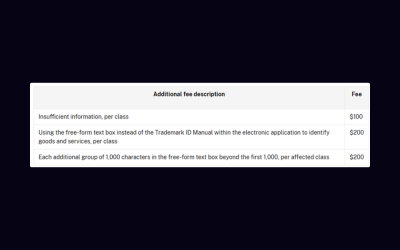
But wait, there’s more. Ironically, there’s a $100 fee for too little information, a $200 fee for too much information (over 1,000 words), and a $250 fee if you take too long to respond. There’s also a $200 fee if you want to use the free form box, and, of course, a $50 fee for insufficient funds.
If your address is outside the US and you want to register a trademark, you are required to hire a U.S.-licensed lawyer to represent you. You would pay the lawyer’s fees in addition to the above-mentioned USPTO fees.
Renewal and maintenance costs and fees
Once you’ve registered your trademark, it’s your responsibility to actively maintain it and protect it.
Trademark Renewal Fees
If it lapses, you have to start over, and there is NO guarantee your trademark will still be available.
Yes, that’s right. Someone else can take your trademark if you let it expire.
To keep the trademark, you need to maintain your renewal fees. Here’s the fee schedule:
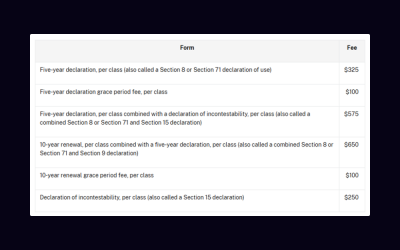
First Renewal (completed between 5th and 6th year)
You will have a few different fees to pay this time. You will need to pay:
- a $325 declaration fee, per class
- a $250 declaration of incontestability, per class (you can only purchase this if you’ve been selling your goods for at least five years, and you meet certain legal requirements)
OR
- A $575 declaration combined with a declaration of incontestability, per class
Second Renewal (completed between the 9th and 10th year)
A $650 per class, 10-year renewal, combined with a five-year declaration, per class (also called a combined Section 8 or Section 71 and Section 9 declaration)
Other Renewals (completed every 10 years)
A $650 per class, 10-year renewal, combined with a five-year declaration, per class (also called a combined Section 8 or Section 71 and Section 9 declaration)
Maintenance fees
The renewal fees are the easy bit. The harder part is that it now becomes YOUR responsibility to protect and maintain your trademark and keep using your trademark.
Just like McDonald’s lost its right to the Big Mac in the EU, you can lose your trademark rights IF you don’t continuously use the product.
You need to make sure no one else is using your trademark and take legal action if there is trademark infringement. If you don’t take legal action right away, the other company may be able to file a 5-year continuous use renewal and protect their rights.
For maintenance fees, many companies hire a trademark lawyer to perform trademark monitoring, ensuring the uniqueness of their product. At times, companies will also need to hire a lawyer to defend their trademark or protect themselves against copycats.
How do you trademark your name?
Now that you know the benefits of a trademark and its associated costs, it’s time to protect your brand by getting your trademark. Take the following steps:
1. Research your brand’s name.
Make sure your brand can be trademarked. You can search the USPTO database to find out if your brand has already been trademarked or search for similar trademarks with a comprehensive clearance search.
It’s a complicated process, but you can sign up for a federal trademark searching webinar series to learn how. Honestly, the process is so complicated that you should probably seek legal advice.
2. Get a lawyer.
Seriously, the USPTO loves its fees. With fees for too much information and fees for too little information, a good lawyer can help you navigate submitting your paperwork successfully, and potentially save you from extra costs from the USPTO (and from bureaucracy headaches).
3. Submit your application.
Time to get all the paperwork together and get your trademark application submitted.
Final Thoughts on Trademark Registration Price
Getting a trademark can be expensive, but so is building your brand. Registering your trademark helps protect the brand you’ve created.
With an average of 2,500 applications being submitted daily this year, don’t wait. Hire a lawyer to help you, or go to USPTO and start working on registering your trademark today!
